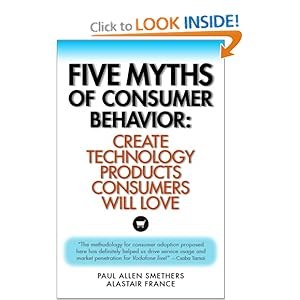Unilife 2010 Annual Report – http://files.shareholder.com/downloads/ABEA-474G59/1302920316x0x411720/98bf624d-f736-4c45-9857-60c261e25a1a/UNILIFE_AR-View_Final.pdf
http://ir.unilife.com/
Competitors Include:
http://www.accessscientific.com/
http://www.revolutionsmedical.com/
also BD (major), Gerresheimer Bunde GmbH, MGlas AG, SCHOTT forma vitrum AG, and Nuova Ompi
They’ve actually got a great market opportunity since it seems that insulin is a big deal for them. with the number of fat people and diet issues in the US (and eventually around the world), people aren’t going to want to have to leave exposed needles lying around for kids in the house to get hurt with. This is actually an investment that benefits from the fattening of the world.
?? what is pricing? how does it compare to the alternative syringes, factoring in shipping costs due to bigger needles & extra risk.
“The options will vest as follows: 250,000 options will vest upon our share price reaching $9.45 or more for a minimum of 20 out of any 30 consecutive trading days, 250,000 options will vest upon our share price reaching $12.15 or more for a minimum of 20 out of any 30 consecutive trading days and 334,000 options will vest upon our share price reaching $17.82 or more for a minimum of 20 out of any 30 consecutive trading days”
^^^ the stock is currently 4.46/share. Their FIRST share price goal is 9.45/share. Why do they think that their share price is going to be up around there?
There’s only one analyst covering Unilife right now.
http://www.safetysyringes.com/products/passiveng/index.html – competitor? what’s the difference?
what about http://www.google.com/finance?client=ob&q=AMEX:RVP — Retractable Technologies (they make Vanishing Point) syringes. 2011 annual report says they’re having problems getting into markets because BD is blocking them with long-term distribution contracts.
2011 Annual Report – http://b2i.api.edgar-online.com/EFX_dll/EdgarPro.dll?FetchFilingConvPDF1?SessionID=BXxnH3xvkgaMo-9&ID=7833010
Retractable Technologies seems like a bunch of bitches. I thought Texans were supposed to be tough. In their Annual Report, they whine about BD being bigger and having access to markets, they’re suing in order to make money and fight their way in, and they’ve only got one supplier for their international sales — Double Dove. ?? This seems weird. Why are they buying the different types of syringes on page 8? Why aren’t they just buying glass tubes like Unilife? Why do they only have a single supplier lined up?
Esp given that they’ve been going around suing people, Unilife might be a better candidate for acquisition than Double Dove. If they have an incrementally better product, and they’re not assholes, it’s easier to justify a purchase.
* I did notice they seem to have a 30% profit margin, even though they’re all down about having a shitty position. If they can get 30% gross margins (with apparently a less desirable product than Unilife),
The Unilife people also seem committed enough to move their biz to the US (presumably taking time and being a pain in their asses). They’re obv committed (and are apparently putting decent amounts of their own money into the company). CEO put $500k in recently.
The real issues seem to be the costs in licensing the tech from the inventor, the ability to produce them, and the ability to sell & distribute it. Also highly relevant is the cost of production, etc.
Unilife has a clever strategy for getting around licensing issues. They’re going to prefill the syringes and get them distributed by the companies making the meds (and this also has the effect of making those drugs more valuable longer, even if those drugs come off-patent).
??? How much medication is lost due to the overhead of having to fill needles manually, does it drip out or evaporate, where prefilled syringes are widely known to be better? That seems to be more relevant when it comes to non-prefilled syringes
Prefilled syringes are probably valuable when it comes to the insulin & use at home.
BD might buy these guys, yes?
How big of a market is the prefilled syringe market?
http://www.youtube.com/watch?v=6NxhEj0fCFI – damn the unilife syringe looks easy to use
it gives me hope that they have the sense to make a youtube account http://www.youtube.com/user/UnilifeCorp
also gives hope that their meeting room wasn’t ostentatious, unlike the CEO’s gold watch.
I really like their comp plans, which are spelled out very clearly in their annual report. They have aggressive and specific goals for comp.
OK, what’s the company worth?
pricing on syringes is hard to pin down. Plastic syringes are commodity, figure $.25 per standard syringe is a fair ballpark for a fair-quality product. I saw 19 cents, 40 cents, etc.
BD safety syringe at 69 cents/syringe http://syringesupplies.com/?mainURL=%2Fstore%2Fitem%2F1k059%2F1cc_Syringe_with_Needle%2F10_1cc_x_25g_x_5_8_Eclipes_Safetey_Syringe.html%3Fitem_id%3D1k059
This single data point suggests a more than 100% premium is fair for a quality name and safety feature
I’m getting the idea that glass syringes are $1.50/piece. !!! Can’t prove this yet, should make a few calls on a weekday and see what prices I can get quoted.
OK, assuming that glass syringes are typically $1.50 each. Assume a 25% price premium, to be very conservative and allow for volume discounts and all that sort of such. 37.5 cents premium, so we’re talking 1.875 dollars income per unit.
Assume Unilife can get the same gross margins as the bitch-ass Texan company, and we’re talking $.5625 gross profit per syringe
Unilife is prepping to manufacture 400 million in their current factory, and have the ability to upgrade the factory to a billion.
per hundred million..
100,000,000 * $.5625 = $56.25 million dollars gross profit
Even if they only sell 100 million syringes per year, they’re at 50 million gross profit.
current factory with no mods can get them 200 million gross profit/year.
current market cap is slightly under 300 million.
assume a rough p/e of 10 is fair, they’re a 2 billion dollar company in their current factory, and at least a 500 million company (assuming only 100 million sold/year; 25% factory utilization; implicitly, their own estimates on capacity were roughly validated by the implementers and others, including their close relationship with sanofi-aventis, and they only need to be around 25% capacity on average for them to be worthwhile).
So they’re worth a lot and they are a good business. How likely are they to be able to sell hundreds of millions…what’s the market?
They’re looking internationally, so we’re talking global market.
Assume there’s 2 billion people in wealthy parts of the world, and 30% of them are at a stage where they’re roughly getting stuck by a needle once per year. that’s 600 million people getting stuck once per year for something like vaccine (flu?), or something else. If they get 1/6th of this market, they’re over a 500 million company.
their launch partner…check their site for stats on rough market numbers
Sanofi says 500 million people are immunized with their vaccines every year. 500 million injections. 20% of those going through unilife syringes equals the 500 million company threshold. That sounds reasonable.
Unilife’s COO used to be VP & GM of BD, one of the biggest competitors, until 2010. He knows all about their shit, and might be a conduit for acquisition.
http://www.who.int/injection_safety/about/resources/en/QuestionAndAnswersInjectionSafety.pdf
16 billion preventative & curative injections in *developing & transitional* countries. Not even first world.
http://www.ncbi.nlm.nih.gov/pubmed/14769164
in 2000, persons received an average of 3.4 injections per year,
Call their distributors: http://www.unitract.com/distributors.html
? Do they sell a lot of these things?
? Do they get any complaints about them?
? What’s the best-selling syringe?
More risk:
the “going concern” note. But, that was issued a year ago, and they still seem to be chugging alone fine.



 Question hidden assumptions. It’s what Richard Feynman did, with his belief that all problems should be solved from first principles. He’d take even the most basic and widely accepted answers, strip them down, and re-derive the answers himself. I think it’s one of the things that led to him being so effective (a lot of people consider him a modern day Einstein, except his discoveries aren’t as consumer-friendly as e=mc^2, so he doesn’t have the same pop culture awareness). In doing this, he’d run into all sorts of assumptions that people were making (without realizing it), sometimes leading them away from a useful piece of information.
Question hidden assumptions. It’s what Richard Feynman did, with his belief that all problems should be solved from first principles. He’d take even the most basic and widely accepted answers, strip them down, and re-derive the answers himself. I think it’s one of the things that led to him being so effective (a lot of people consider him a modern day Einstein, except his discoveries aren’t as consumer-friendly as e=mc^2, so he doesn’t have the same pop culture awareness). In doing this, he’d run into all sorts of assumptions that people were making (without realizing it), sometimes leading them away from a useful piece of information.